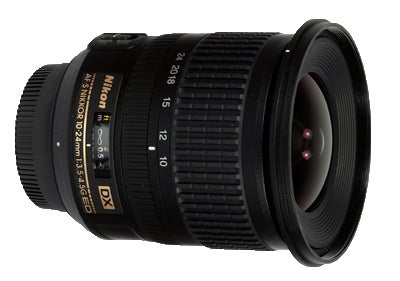Nikon’s new 10-24mm zoom is mightily similar to the previous 12-24mm version. What Digital Camera reviews the Nikkor AF-S 10-24mm f/3.5-4.5G ED DX lens...
Nikon AF-S 10-24mm f/3.5-4.5G ED DX Review
The zoom ranges are a little different, of course, and so are the aperture specifications: the existing 12-24mm lens has a fixed f/4 maximum aperture whereas the new addition has an f/3.5-4.5 variable aperture. Another difference is the visible extension and contraction of the barrel length when the new Nikkor 10-24mm lens is zoomed versus fully internal movements for the existing 12-24mm lens.
It is therefore evident that the new lens is not simply an extended version of the older zoom but rather it is a completely different design. Further support for this can be seen in the enlarged exit pupil and a smaller area of glass at the front (but the same 77mm filter thread). The new lens is also made in China rather than Japan, which might suggest a slight difference in status – especially given Nikon’s own comment that the zoom’s image and build quality are ‘almost equivalent’ to those of the previous version.

Although the Nikon 10-24mm should not be fitted to a full-frame camera, it has excellent DX-format compatibility and can be used on both high-end bodies such as the D300 and also simpler bodies that lack internal focusing motors, such as the D40 and D60. The only issue to watch out for is vignetting when a camera’s pop-up flash is used, but this can be minimised by ensuring that the supplied lens hood is removed.
In terms of technical testing the new lens is very slightly weaker than its fixed-aperture stable-mate, but the differences really are minor. Real-world testing produced similarly comparable results although there was no sign of the occasional softness that was seen when the 12-24mm sample was evaluated.
So where does this leave us: is Nikon’s new 10-24mm a better lens than the 12-24mm? Not really, for as previous comments have suggested the new lens simply offers Nikon users a different balance of price, aperture and zoom range.





